|
The Dream Scenario:
Imagine this: you and your furry best friend are strolling down a sun-dappled path. Your dog pauses to investigate a particularly intriguing shrub, then trots back to your side with a wagging tail, ready to continue the adventure together. Ahead, a stranger approaches. With a simple cue, your dog falls in step beside you, and you both glide past with the grace of a well-rehearsed dance duo. The walk resumes with your pup joyously sniffing around, still checking in reliably. As you near the journey's end, ready to cross back to your car, your dog automatically pauses at the curb waiting for the okay to cross. Sounds pretty perfect, right? But why does this scenario seem more like a fantasy? The Not-So-Perfect Reality: In reality, leash walks can often feel more like a chaotic tug-of-war than a walk in the park. Unfortunately, you may be more familiar with this scenario: no sooner have you hit the path than your dog is pulling like a sled dog towards the nearest critter, while you're left clutching the leash, trying keep your shoulder in its socket. A stranger approaches, and your dog lunges in for a greeting. Or, your adventurous pooch might decide to charge ahead at a busy intersection, leaving you shouting in vain. So, why is the polite calm walk so elusive? Well, it turns out leash walking is more complicated than you think. It's actually a complex ballet of skills and patience—skills that both you and your dog must master. This includes keeping focus on the leash, walking calmly by your side, returning when called, resisting the urge to pull, and stopping when needed. The key is to train each of these skills separately and bring them all together once they are solid. In other words, break the skills it into manageable pieces. Mastering the Art Together: While both of the scenarios are at the extreme ends of a spectrum, everyone can have better walks with the right exercises and practice. There are talents your dog needs to master in order to transform from a puller to a partner. But, here’s a twist: you, the person at the other end of the leash, also need a toolkit of skills! It's crucial to learn how to effectively reinforce good behavior, handle the leash and gear properly, and know how to pivot when things don't go according to plan. Once you both have these skills down pat, walking becomes a delightful, stress-free experience for both of you. You can make the dream a reality!
0 Comments
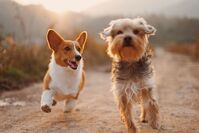 There is some confusion among dog people about dog socialization. Many use the terms social, sociable and socialize interchangeably, but there are important differences. Socialization occurs in a developmental period, and can help dogs be more sociable, while being social means dogs are interacting with others. Socialization: In dogs, the ability to cope with new situations is both learned and inherited. Introducing and familiarizing your dog to new experiences – including people, places, and other animals – is called socialization. It refers to the process of carefully exposing a dog to various people, places and things, and it specifically refers to a crucial development period, typically between 3 weeks and 12 weeks of age. Positive experiences during this phase helps dogs become well-adjusted, confident, and friendly in different situations and around different people and animals. After this age, they continue to learn but this kind of learning is much slower and some behaviors learned during this period are hard to change. Here are some tips on Puppy socialization. Socializing: Many time people use socialization when they mean "social,” which means that the dog enjoys interacting with other dogs or people. Social dogs typically exhibit friendly behavior, such as approaching others with wagging tails, engaging in play, and showing signs of enjoyment in social situations. These dogs may seek out the company of other dogs or people and feel comfortable in group settings. Your dog will tell you whether they enjoy interacting with thier body lanugage. Sociability: Similar to being social, a sociable dog is one that is friendly, outgoing, and enjoys being around other dogs or people. A sociable dog may actively seek out interactions with others, enjoy meeting new dogs or people, and display positive body language, such as relaxed posture and friendly gestures. Being sociable implies a natural inclination or preference for social interaction. There is much variation in individual dogs when it comes to sociability. Breed, personality and early learning impact how sociable each dog is. There is a spectrum of sociability, not all dogs love all other dogs. In summary, socializing refers to the process of exposing a dog to new things including social situations, while social and sociable describe the dog's behavior and disposition toward interacting with others. Remember that every dog is unique, and their progress will vary. With love, patience, and positive reinforcement, you can help your dog improve their social skills even beyond the critical window.
If you have questions or want more information how to socialize your dog or your dog’s behavior with other dogs hit me up! 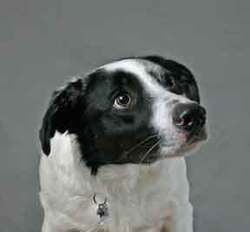 Dogs are amazing creatures that bring us joy and happiness in many different ways. They wag their tails, jump up and down, and make us laugh with their playful antics. But just like humans, dogs can experience stress too, and it's important for us as their caregivers to recognize the signs. So, what does stress look like in dogs? Well, it can manifest in a variety of ways. Some dogs may become more clingy, and seek constant attention, while others may withdraw and become more distant. Some dogs may pant excessively, pace back and forth, or lick their paws excessively. Other signs of stress in dogs include changes in appetite, digestive issues, and excessive shedding. You may also notice that your dog is more irritable or aggressive than usual, or that they're not as interested in playing or going for walks. Dogs also show communicate feelings with their bodies. Understanding their cues can help us recognize when they're feeling stressed or anxious. One common sign of stress in dogs is a lowered body posture. This can include hunching over, tucking their tail between their legs, and flattening their ears against their head. Some dogs may also avoid eye contact or turn their head away from you. On the other hand, some dogs that feel anxious may have a tense body posture, with their muscles stiff and their ears and tail held high. They may also pant excessively or drool more than usual. Which signs they show depend on the dog and their particular situation. Other signs of stress and anxiety in dogs include pacing, shaking, or trembling. They may also exhibit destructive behavior, such as chewing or digging, as a way to release their pent-up energy and anxiety. But the good news is that there are many things we can do to help our furry friends manage stress and feel more relaxed and happier. Each dog is different and the treatment for stress and anxiety is will also vary depending on the triggers and the dog’s personality and temperament, and a few other factors. Not all solutions work for all dogs, but here are some things to consider. We can provide our dogs with a safe and comfortable environment that's free from loud noises and other stressors. This can include creating a designated "safe space" for them to retreat to when they need a break, such as a cozy bed or crate. Another way to help our dogs manage stress is through positive reinforcement training. By rewarding good behavior and teaching them new skills, we can build their confidence and help them feel more secure and in control. For some dogs play and exercise are stress reducers. Finally, it's important to give our dogs plenty of exercise, love and attention in a way that the dog finds comforting and helpful. For example not all dog find pets comforting when they are stressed. So, know your dog. In conclusion, while stress can certainly impact our dogs, there are many things we can do to help them feel more relaxed, happy, and secure. With a little love, patience, and attention, we can help our furry friends live their best lives and continue to bring us joy and happiness for years to come. Remember, our dogs rely on us to keep them happy and healthy, and by paying attention to their body language and providing them with the care and support they need, we can help ensure that they live their best lives. If your dog’s stress is chronic and impacting the family contact a certified and fear free practitioner to help you. For more information set up a time to talk at https://calendly.com/petamorphosis/15-minute-service-consultation. Dealing with an aggressive/reactive dog can be a challenging and scary experience for anyone with a dog. However, with the right approach and strategies, it is possible to help your dog become calmer and more well-adjusted. In this post, we will explore techniques to transform your dog into a more relaxed and happier companion.
1.Identify Triggers and Avoidance: Understanding the triggers that provoke aggression in your dog is key to managing their behavior. Observe your dog closely to identify specific situations, people, or objects that trigger their aggressive response. Once you have identified these triggers, work on creating a safe environment to avoid or minimize exposure to them. By proactively managing their environment, you can prevent unnecessary confrontations and reduce stress for your dog. 3. Positive Reinforcement and Behavior Modification: Positive reinforcement techniques are highly effective when dealing with aggressive dogs. Reward-based training focuses on reinforcing desired behaviors instead of punishing negative ones. Use treats, praise, and other rewards to reinforce calm and non-aggressive behaviors, such as sit, look or down. This approach helps your dog associate positive experiences with appropriate behavior and encourages them to make better choices in stressful situations. 4. Gradual Desensitization and Counterconditioning: Desensitization and counterconditioning are valuable tools in reshaping your dog's response to their triggers. The process involves gradually exposing your dog to the trigger at a low intensity while simultaneously providing positive experiences or rewards. Start with mild exposure to the trigger and increase the intensity gradually as your dog becomes more comfortable. This method helps your dog develop a positive association with the previously feared stimulus, reducing their aggressive response over time. 5. Consistency, Patience, and Time: Rehabilitating an aggressive dog requires consistency, patience, and time. Consistently apply the training techniques and strategies recommended by professionals, and establish clear boundaries and rules for your dog's behavior. Be patient and understand that progress may be gradual. Each dog is unique, and the rate of improvement can vary. Celebrate even the smallest victories and remain dedicated to your dog's well-being. 6. Seek Professional Guidance: When faced with an aggressive dog, it is crucial to consult with a professional dog trainer or behaviorist who specializes in aggression cases. These experts have the knowledge and experience to assess your dog's behavior accurately and develop a customized training plan. They can guide you through the process of understanding the underlying causes of aggression and provide you with effective techniques to manage and modify your dog's behavior. Helping an aggressive dog requires a comprehensive and compassionate approach. By seeking professional guidance, identifying triggers, implementing positive reinforcement techniques, and gradually exposing your dog to their triggers while providing positive experiences, you can effectively address their aggression. Remember, consistency, patience, and time are key to transforming your aggressive dog into a happier and well-behaved companion. With the right support and effort, you can make a positive difference in your dog's behavior and strengthen the bond between you and your furry friend. Dogs are amazing creatures that bring us joy and happiness in many different ways. They wag their tails, jump up and down, and make us laugh with their playful antics. But just like humans, dogs can experience stress and anxiety too, and it's important for us as their caregivers to recognize the signs. So, what does this look like in dogs? Well, it can manifest in a variety of ways. Some dogs may become more clingy, and seek constant attention, while others may withdraw and become more distant. Some dogs may pant excessively, pace back and forth, or lick their paws excessively. Other signs of anxiety in dogs include changes in appetite, digestive issues, and excessive shedding. You may also notice that your dog is more irritable or aggressive than usual, or that they're not as interested in playing or going for walks. Dogs also show communicate feelings with their bodies. Understanding their cues can help us recognize when they're feeling stressed or anxious. One common sign of stress in dogs is a lowered body posture. This can include hunching over, tucking their tail between their legs, and flattening their ears against their head. Some dogs may also avoid eye contact or turn their head away from you. On the other hand, some dogs that feel anxious may have a tense body posture, with their muscles stiff and their ears and tail held high. They may also pant excessively or drool more than usual. Which signs they show depend on the dog and their particular situation. Other signs of stress and anxiety in dogs include pacing, shaking, or trembling. They may also exhibit destructive behavior, such as chewing or digging, as a way to release their pent-up energy and anxiety. But the good news is that there are many things we can do to help our furry friends manage anxiety and feel more relaxed and happy. Each dog is different and the treatment for stress and anxiety is will also vary depending on the triggers and the dog’s personality and temperament, and a few other factors. Not all solutions work for all dogs, but here are some things to consider. We can provide our dogs with a safe and comfortable environment that's free from loud noises and other stressors. This can include creating a designated "safe space" for them to retreat to when they need a break, such as a cozy bed or crate. Another way to help our dogs manage stress is through positive reinforcement training. By rewarding good behavior and teaching them new skills, we can build their confidence and help them feel more secure and in control. For some dogs play and exercise are stress reducers. Finally, it's important to give our dogs plenty of exercise, love and attention in a way that the dog finds comforting and helpful. For example not all dog find pets comforting when they are stressed. So, know your dog. In conclusion, while stress can certainly impact our dogs, there are many things we can do to help them feel more relaxed, happy, and secure. With a little love, patience, and attention, we can help our furry friends live their best lives and continue to bring us joy and happiness for years to come. Remember, our dogs rely on us to keep them happy and healthy, and by paying attention to their body language and providing them with the care and support they need, we can help ensure that they live their best lives. If your dog’s stress is chronic and you are struggling to help contact a certified and fear free practitioner to support you and provide guidance. Hey there, fellow dog people! Are you ready to hear about some of the most adorable and challenging creatures on the planet? That's right, we're talking about puppies!
Puppies are bundles of joy that bring love, laughter, and snuggles into our lives. But let's face it, they can also be a handful. From potty training to chewing everything in sight, raising a puppy is not for the faint of heart. But fear not, my friends! We've got some tips and tricks to get you started working on some common puppy issues. Potty Training Woes Ah, the joys of potty training. It's a necessary evil, but it doesn't have to be a complete nightmare. First things first, establish a routine. Take your pup outside at the same time and same place every day. Then treat and praise them when they go potty outside. Make sure to clean up any accidents inside with an enzymatic cleaner to eliminate the scent. Generally, how long a puppy can hold it depends on their developmental stage:
Chew on This Puppies are notorious for chewing everything in sight. Shoes, furniture, even walls – nothing is safe from their little teeth. The key to combatting this is to provide plenty of appropriate chew toys, and puppy proof your home (nothing on the ground that you don’t want them to chew) If you catch them in the act of chewing on something they shouldn't, redirect them to a chew toy and praise and/or treat them for chewing on that instead. Sleep Struggles Puppies need a lot of sleep, but getting them to actually sleep can be a challenge. To help your pup get into a routine, establish a bedtime and stick to it. Create a comfortable sleeping area for them with a cozy bed, and some toys to keep them occupied. Socialization is Key Socializing your puppy is crucial for their development. Introduce them to other dogs, people, and new environments. This will help them become well-adjusted and confident dogs. Socialization is gradually and safely introducing them to new people, places and things. Training Time Training your puppy is essential, but it can also be frustrating. Remember to be patient and consistent. Keep training sessions short and positive, and always end on a good note. Make it fun, games are the best way to train young dogs. Be aware that not all training works at every puppy stage. Puppy challenges can be tough, but they're worth it for the love and joy these little balls of fur bring into our lives. And with a little patience, consistency, and a whole lot of love, you and your pup can conquer anything together. That said, this is the time to get help if you are struggling. Happy puppy raising! There is not much as heartwarming as watching them romp around and play. Today I watched as my pup and kitten wrestled. It was awesome, teeth and claws flashing, but no one was hurt, and happiness was obvious. For young animals play is a time of discovery, and exploration, and lots of fun. But have you ever stopped to wonder what's really going on when your furry friends are engaging in all that adorable playtime? Let's take a closer look at the world of puppy play!
First things first: what is puppy play? Playtime is an essential part of any puppy's development. It helps them learn vital social skills, develop coordination and physical strength, and, of course, it's just plain fun! Play can take many forms, from chasing each other around to wrestling to gentle tug-of-war games. The key is that it's all done in good fun and with respect for each other's boundaries. What does healthy puppy play look like? Healthy puppy play is characterized by relaxed body language, taking turns, and mutual enjoyment. You'll see lots of wagging tails, playful growling, and even some gentle play biting. Puppy play is also characterized by breaks in the action, where the pups pause to catch their breath or explore their surroundings before resuming play. If one puppy is getting a little too rough, the other will usually let them know with a play bow or by backing off. How can you encourage healthy puppy play? There are a few things you can do to encourage healthy puppy play. First and foremost, make sure you're supervising playtime at all times. Puppies can get carried away, and it's up to you to step in if things start to get too rough. You can also provide plenty of toys and games that encourage play, such as balls, tug ropes, and puzzle toys. Do make sure to be aware some dog may fight over toys. While they play nicely don't forget to give your pups plenty of love, treats and attention! What should you do if puppy play gets too rough? Even healthy puppy play can sometimes get a little too rough. If one puppy is growling, biting too hard, or otherwise making the other puppy uncomfortable, it's time to step in. You can redirect their attention by calling their name or offering a toy to play with instead. You can also use a long line to gently guide them apart and give them some space to cool off. Always remember to praise them for healthy behavior. In conclusion... Puppy play is an essential part of any puppy's development. It's a time of discovery, exploration, and lots of fun! By encouraging healthy puppy play and supervising playtime, you can help your furry friends develop vital social skills, physical strength, and coordination. If you have questions, or if your puppy is having difficulty with appropriate play, don’t wait,……get some help. Training and guidance now, will help prevent issues later. If you want to work with me, I offer three levels of service to choose from. I give lessons, provide follow up help you set goals, and coach you through a fun, easy training process. My focus is to offer your pup training that is most appropriate for them, so they can be a happy, healthy part of your family. I am obsessed with puppy behavior, and how to help our pups become the best and happiest they can be. If you are like me, and you've recently welcomed a furry bundle of joy into your home, you're likely wondering how best to help them be happy and healthy. Puppies, like humans, undergo a critical period of socialization that can greatly impact their behavior later in life. In this blog, we'll explore what the socialization period is and how you can make the most of it to help your puppy grow up to be a well-adjusted, friendly adult.
During the critical socialization period, which occurs between 3-14 weeks of age, puppies are particularly receptive to learning about their environment and developing relationships with other animals and humans. Socialization is important because it helps puppies learn how to interact with the world around them. Puppies who are well socialized are more likely to be confident and less fearful, making them better able to handle new situations and environments. Socialization also helps puppies develop appropriate behaviors, such as how to greet people politely and play nicely with other dogs. What is socialization? Socialization in puppies and dogs is the process of exposing them to a wide variety of experiences, people, animals, and environments in a positive and controlled way. The goal of socialization is to help puppies and dogs develop into well-adjusted, confident, and friendly adults who are comfortable in a variety of situations. The most important point is introducing them so that the experience is positive or at least neutral. It is not just the exposure, but is the happy response to whatever they are being exposed to. Effective socialization can include things like:
The socialization period is an important time in a puppy's life, and it's important to make the most of it. With patience, love, and positive reinforcement, you can help your puppy develop into a confident, well-adjusted adult dog. So, get out there and start socializing your pup today! For more information on how to socialize your pup, or what is typical puppy behavior set up a free 15-minute call with me at calendly.com/petamorphosis/15-minute-service-consultation. 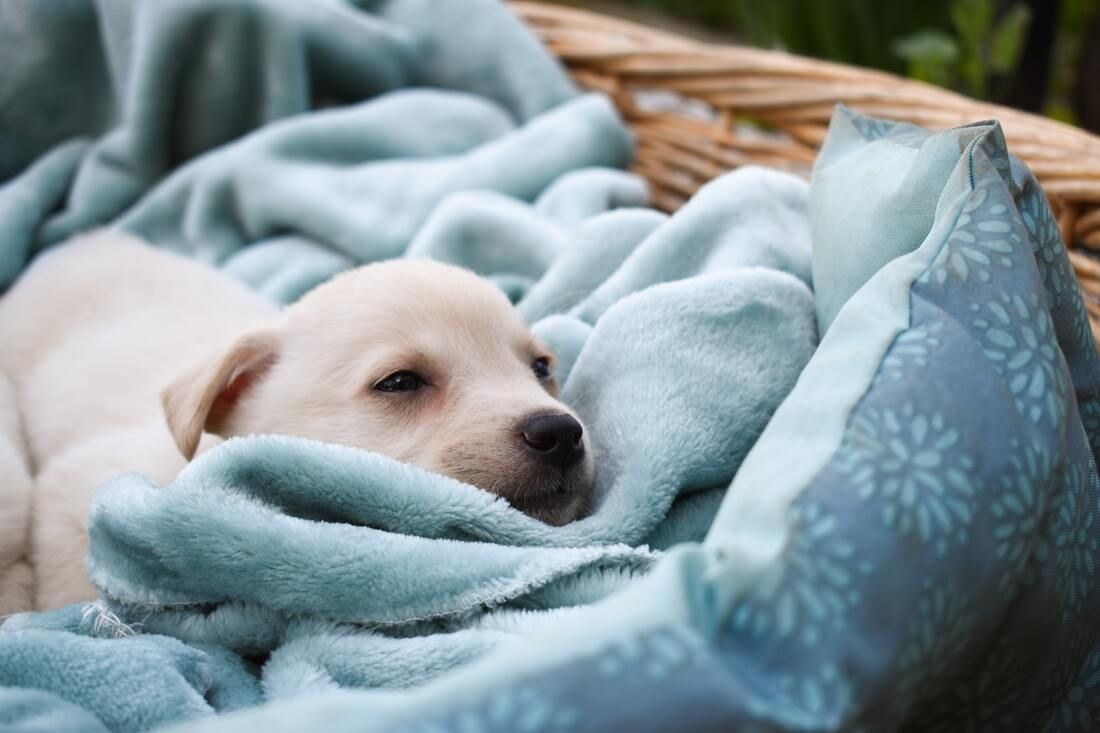 Photo by Zoritsa Valova on Unsplash Week three point five of the Fab Four. One of my foster pups is going to her new forever home, and I am torn between relief and sadness. I will miss her, but I am looking forward to only three little ones to look after. I keep thinking about Taffy’s next adventure. What her first few days will feel like to her? What will the first few days of a new family member be like for her people? Generally the first three days to one week is most difficult for all. Everyone is adjusting to a new schedule, and the dog is in a whole new world. I expect that Taffy won’t be quite herself due to normal stressors. Some dog shut down during this period and others get exceedingly excited and others somewhere in the middle, but bear in mind that there is stress. This is Taffy’s very first time away from her siblings and my home. Everything will be new. My advice to all of you brining a new pup home is to do everything carefully and thoughtfully as not to add to the stress of your new pup. In my recent post I discuss preparing for your pup which will help you be less stressed. I advise not doing to many new things during this time. The priority should be developing a consistent schedule so your new little one knows what to expect from their humans. Think of this as a decompression time. Keep everything simple and the same from day to day. At day 3-5, begin to introduce novel people, places and things. As with any introduction make sure to help your puppy have a positive experience by pairing it with treats or toy play they enjoy. If at any time they tell you they are not comfortable just remove them and come back to it later. Finally, use this time to have fun with your pup, and remember to reinforce all the wonderful things you puppy does. I found for abandoned puppies who have found their way into my home and heart. It is now day 15 of puppy mayhem😊. For all of you who currently have a puppy I salute you. In my last post I focused on what to have on hand before you bring your puppy home. Today, let’s talk puppy development and what that means for you and your new pup. Right now, my pups are approximately 8 weeks of age. The phase from 8-12 weeks is incredibly important time to introduce your puppy to their world. As this is a critical development period, and is your window to carefully, positively expose the pup to novel places, people, and other animals. The experiences they have now have a tremendous impact on the development of their brains and ultimately their behavior. So at this time I am gently exposing the pups experiences like short car rides, crates, leashes, collars new people, and also gentle handling of their bodies. The more novel experiences they get at this age the less issues they will have as adults. The key is to introduce them gently and not force them into a situation where they are scared or stressed this will have the opposite effect. Learn more |
Debbie Lewis, MSI educate and support people as they deepen their understanding of their pet's behavior to create happy, healthy pet-people relationships. Topics
All
Archives
April 2024
|
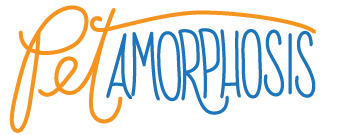

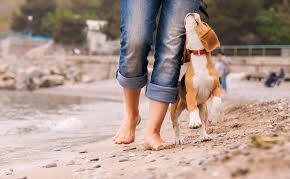
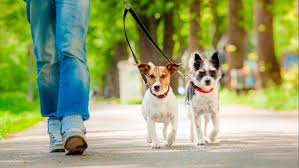
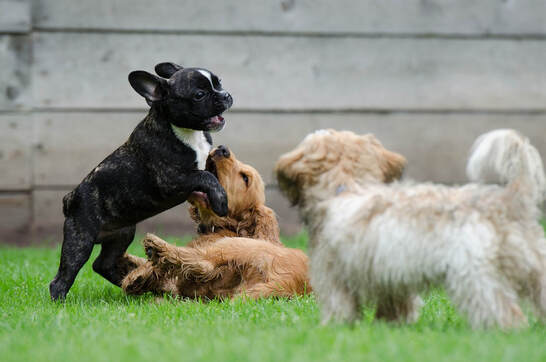
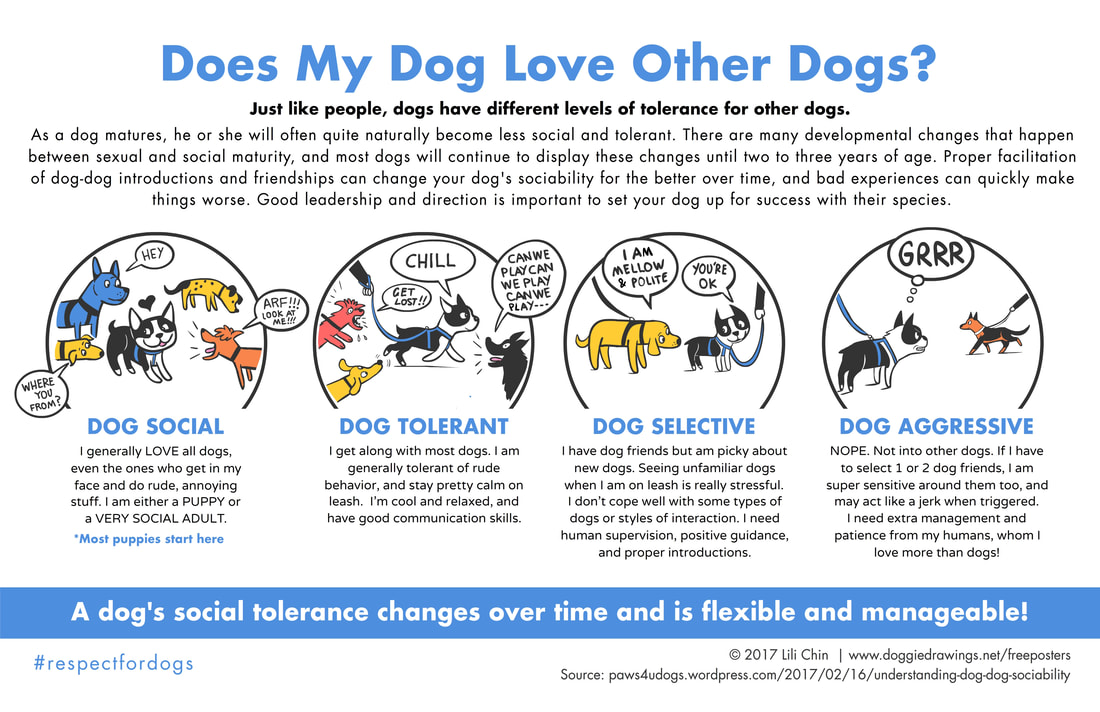
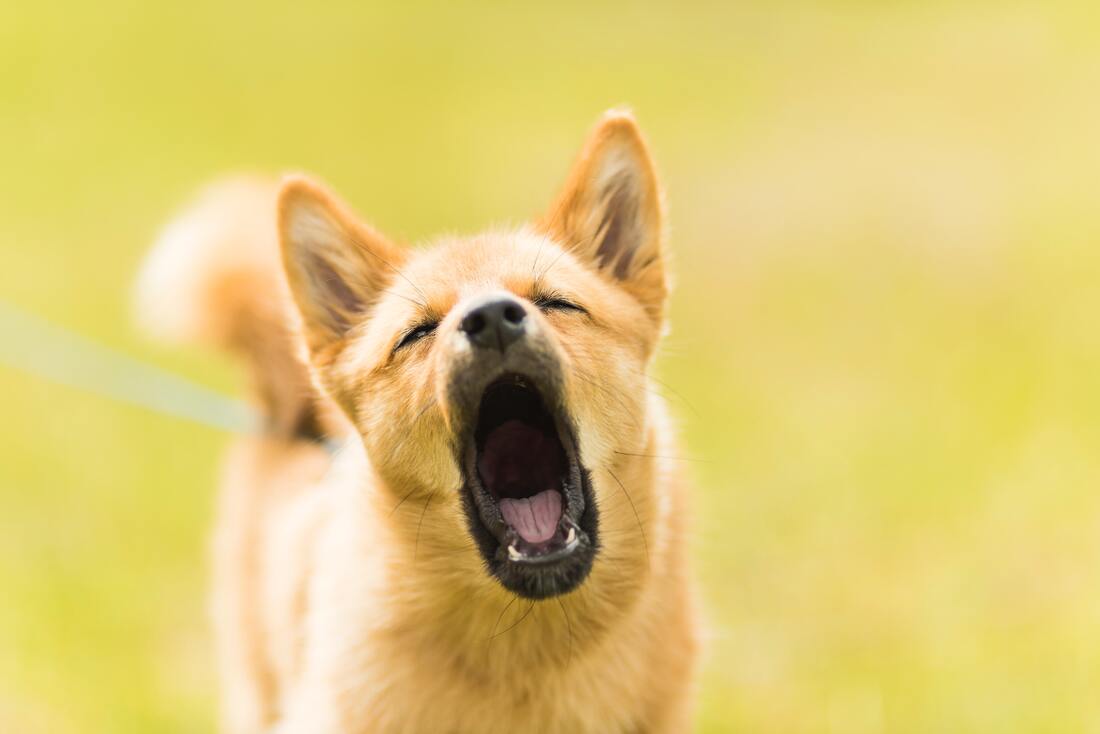

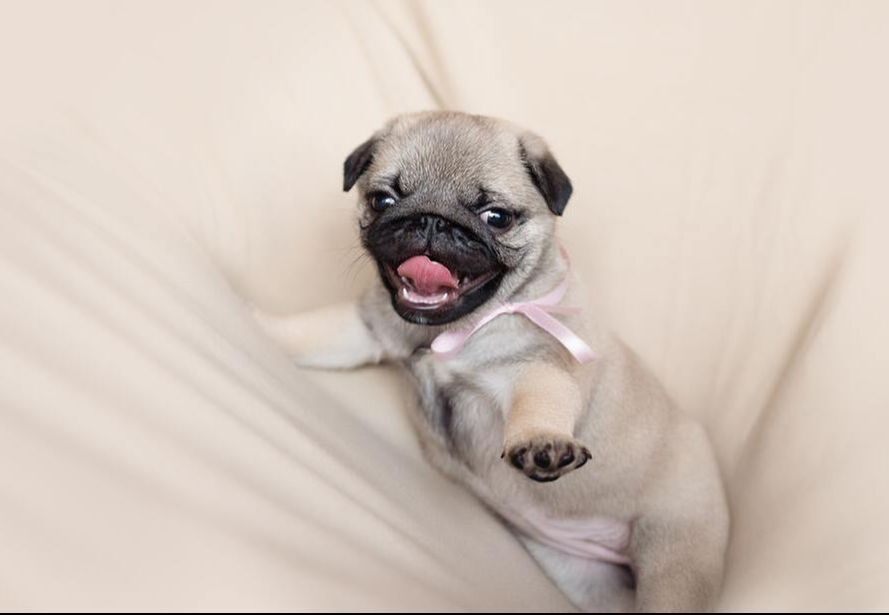
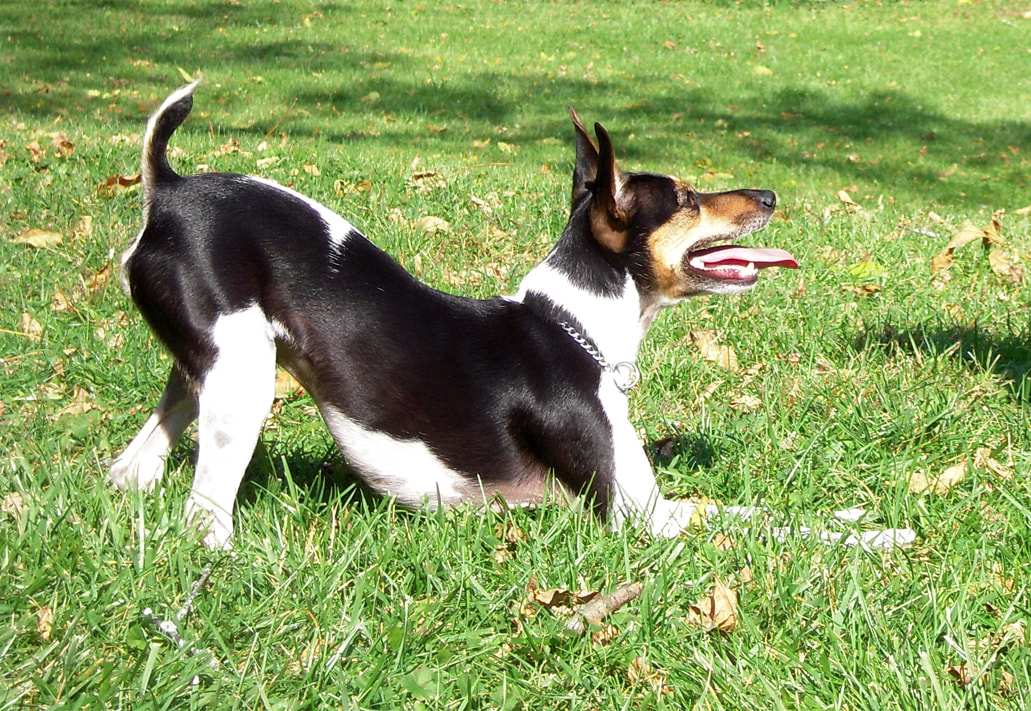
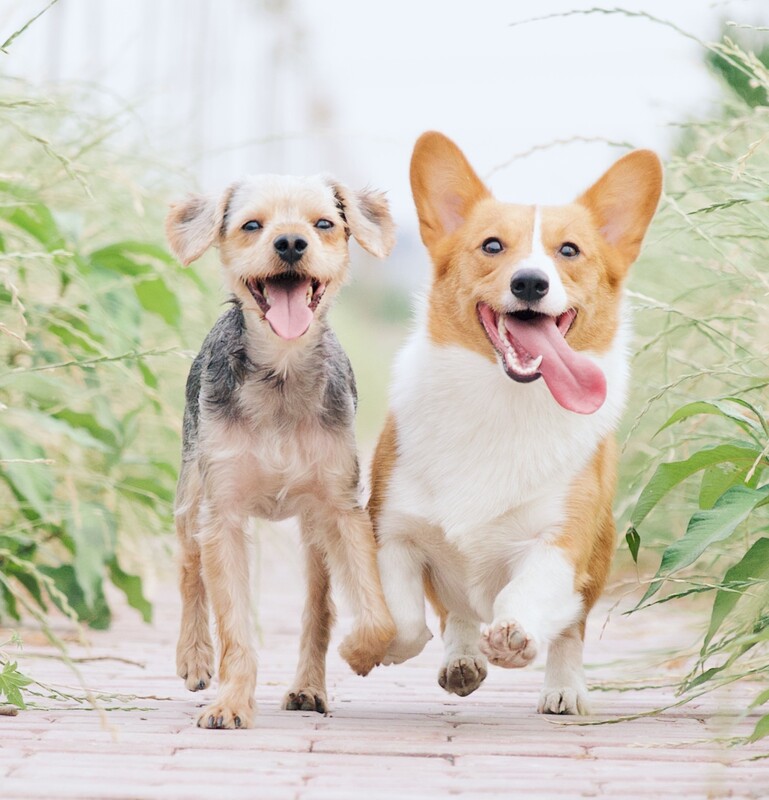
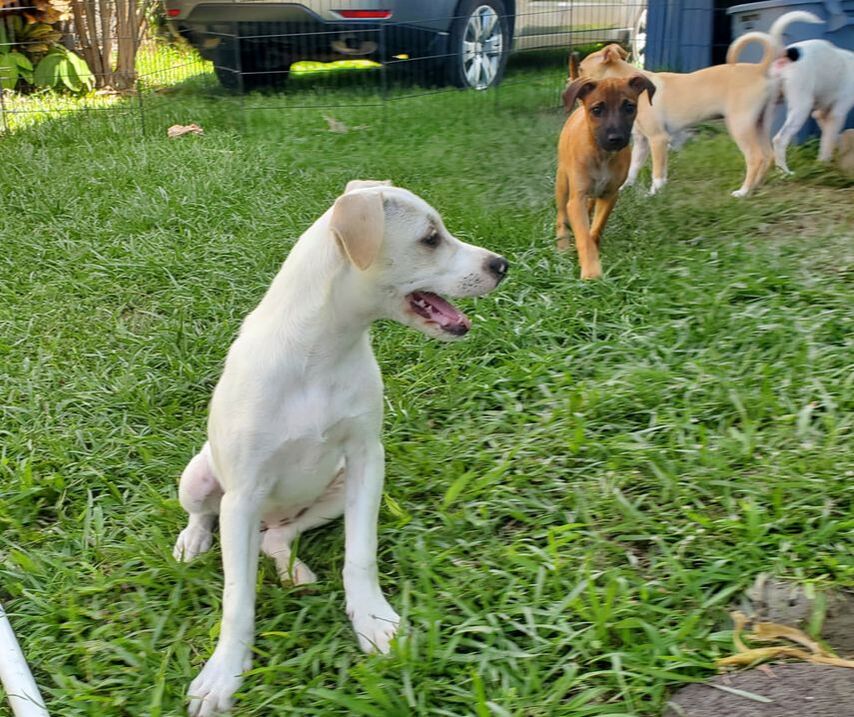
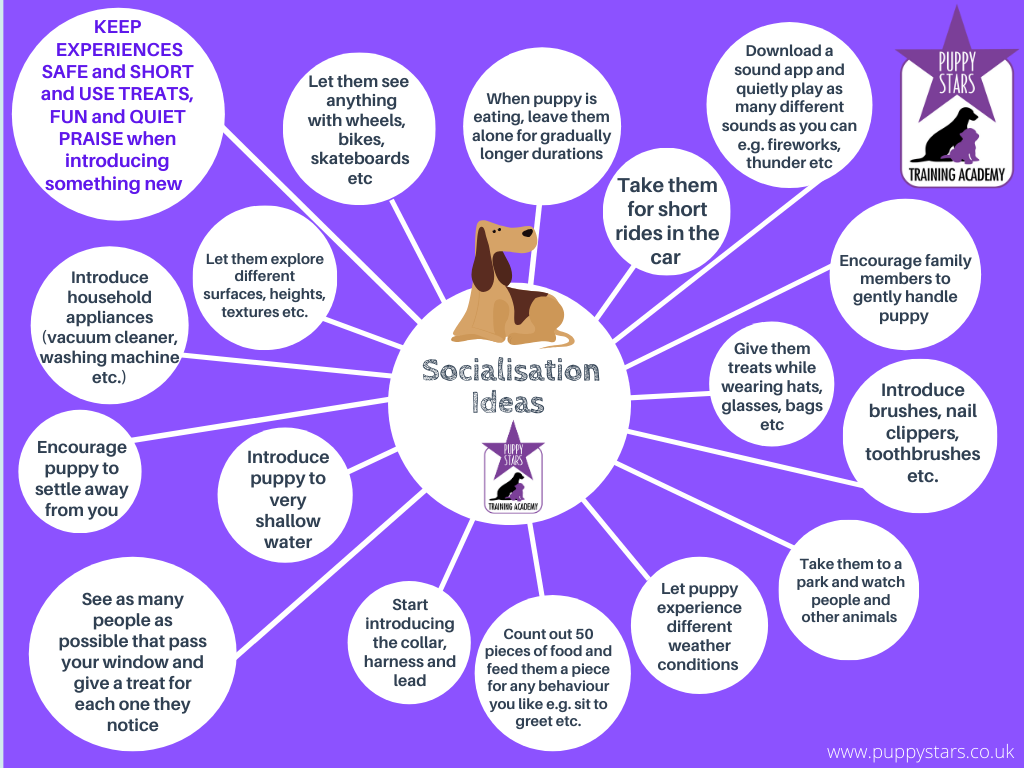
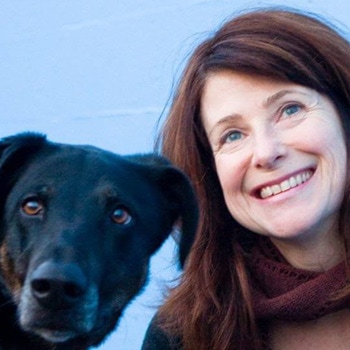
 RSS Feed
RSS Feed


